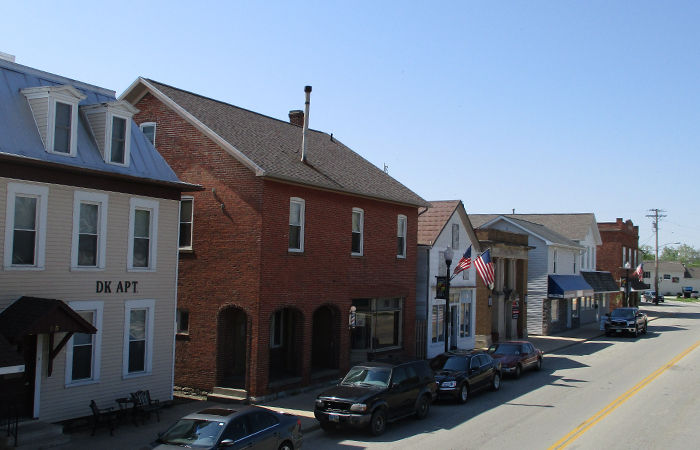Fort Loramie History
After the Treaty of Greeneville was signed by General Mad Anthony Wayne and the Indians, General Wayne ordered a fort built at the site of Peter Loramie’s store to provide protection to the settlers in the western areas of Ohio. The fort was occupied as a military establishment until 1812 when it was abandoned as a garrison. Eventually a store was built on its site by the Furrows who operated it as a trading post and post office.
After the War of 1812, settlement began in the Fort Loramie area, and a town was laid out and surveyed by Jonathan Counts. Lots were sold at auction, and the name Berlin was given to the town. When work started on the Miami-Erie Canal in 1836, German immigration began in earnest. The immigrants came mainly as laborers on the canal and soon purchased land and became permanent settlers. The canal was opened in 1841, bringing finished goods, groceries, clothing and machinery to the area, and taking wood products, grain, pork and other farm items back to the cities.
The first flour mill was built in 1858, and the first general store, Willman’s, was established the same year. Other early establishments included Quinlan’s pharmacy and two taverns, Bruckens and Vogelsang’s Café, both of which are still in operation. The first church, St. Michael’s Catholic Church, was completed in 1851. The one-room school house for the grade school (grades 1-8) was built in 1874 just east of St. Michael’s Church. In 1883 the Fort Loramie Community Fire Co. was established.
By 1909, the canal was almost a thing of the past as a result of the network of railroads that were expanding in all directions. The canal area, which ran through the center of town, fell into disrepair, but was cleaned up, landscaped, and turned into a community park. The canal area north of town is part of a 40-mile Miami and Erie Canal Towpath Hiking Trail. The most important feature remaining from the early canal days is Lake Loramie, the reservoir that kept the canal filled with water. It is now a state park and a haven for fishermen, boaters, campers, and vacationers.

